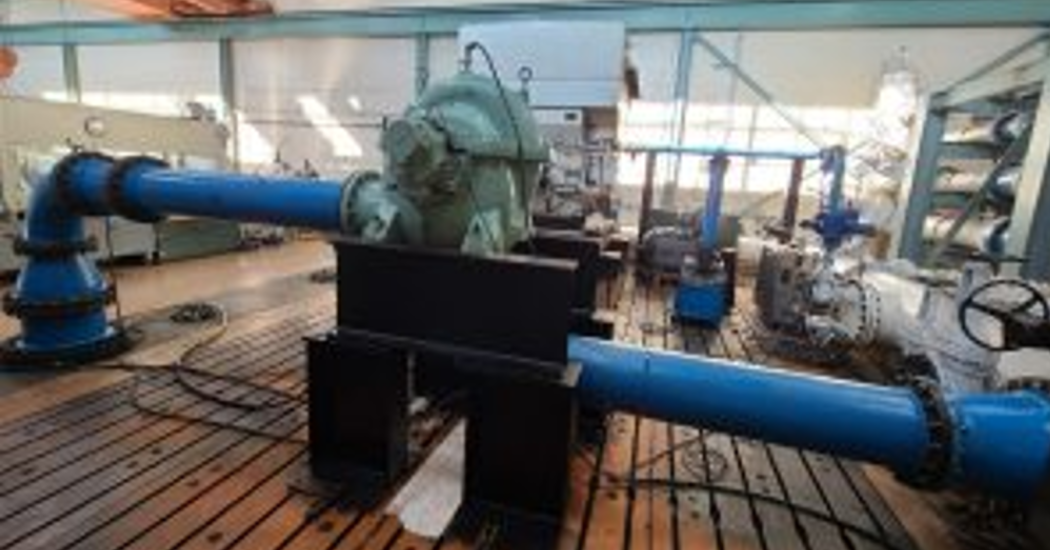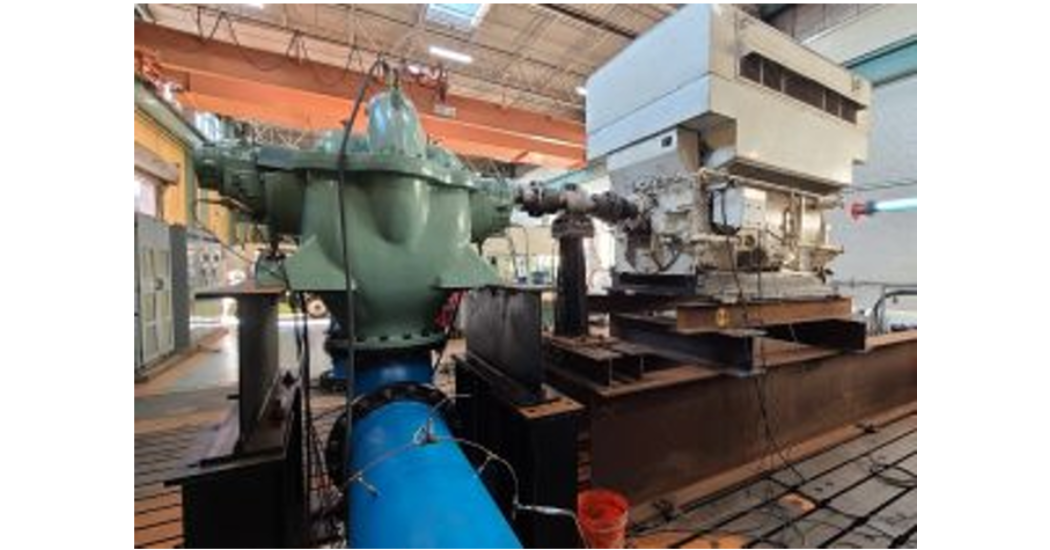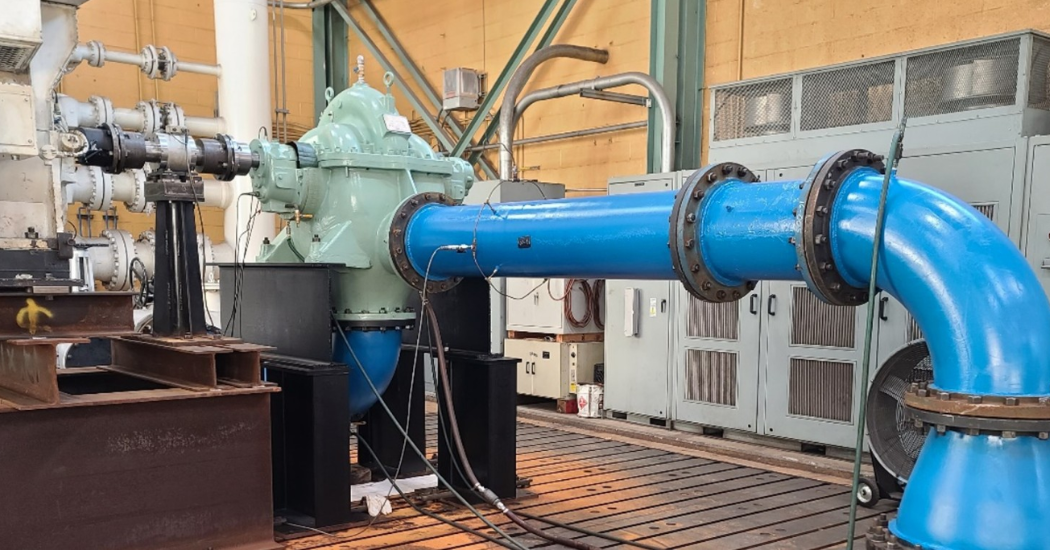A municipal water treatment plant recently had one of their service water pumps refurbished. The refurbished pump is a single-stage, bottom suction BB1 (between bearing) pump with a double suction impeller. In order to validate the performance of the pump, the plant requested testing services from the Hydro Performance Test Lab. The testing services included a Hydraulic Institute certified performance test, a Net Positive Suction Head (NPSH) test, and a bearing housing vibration test.
The bottom suction design of the pump provided some challenges in the design of the test layout and in conducting the NPSH test. The bottom suction design of the pump did not allow for the typical piping layout design. Instead, the mounting feet of the pump needed to be elevated and supported at least 5 feet from the floor to correctly connect to the suction manifold. Changing the pump mounting elevation meant that the motor also needed to be elevated and supported at the same height.
 Conducting an NPSH test provided its own challenges. Because the velocity entering the impeller eye is reduced in a double suction design, the expected NPSHr is quite low. During an NPSH test, the NPSHr at a given flow point is determined by reducing the suction pressure with a vacuum pump or throttling the suction valve until a 3% drop in differential head is observed. Because of the low NPSHr in this pump, achieving the 3% drop in differential head required a decrease in suction pressure below atmospheric pressure.
Conducting an NPSH test provided its own challenges. Because the velocity entering the impeller eye is reduced in a double suction design, the expected NPSHr is quite low. During an NPSH test, the NPSHr at a given flow point is determined by reducing the suction pressure with a vacuum pump or throttling the suction valve until a 3% drop in differential head is observed. Because of the low NPSHr in this pump, achieving the 3% drop in differential head required a decrease in suction pressure below atmospheric pressure.
Another challenge encountered during the NPSH test was that the setup of the test loop required an elbow connected to the suction flange of the pump . This elbow affects the pressure distribution in the suction piping and can affect the fluid upstream of the elbow where suction pressure is measured. Even with these difficulties, the test lab was able to achieve accurate results due to the testing experience of the team analyzing the data.
 After the testing services, it was determined that the total differential head overperformed the Original Equipment Manufacturer (OEM) curve by 12%. In addition, the pump consumed approximately 13% more power than expected. This test provided the customer with accurate information on how their pump was operating and ultimately led them to consider trimming the impeller to better achieve the desired duty point.
After the testing services, it was determined that the total differential head overperformed the Original Equipment Manufacturer (OEM) curve by 12%. In addition, the pump consumed approximately 13% more power than expected. This test provided the customer with accurate information on how their pump was operating and ultimately led them to consider trimming the impeller to better achieve the desired duty point.




